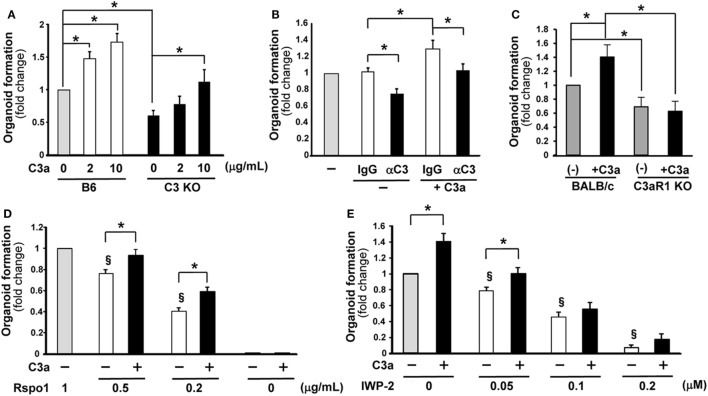Figure 1.
C3a promotes organoid formation. The number of organoids formed in wells 7 days were counted after the initiation of culture under various conditions. The values represent fold change that were calculated based on the number of organoids grown under control conditions. (A) Organoid formation was compared between C3-deficient (C3 KO) and B6 mice in the absence or presence of C3a in the medium at the concentration indicated below the horizontal axis (n = 7 mice in each group) *p < 0.05. (B) The effect of the presence of anti-C3a/C3 antibody (αC3) in the culture medium on organoid formation. Isotype control IgG or anti-C3a/C3 antibody was added in the cultures. n = 7 mice in each group, *p < 0.05. (C) The effect of C3a administration in the culture medium on organoid formation was evaluated using C3aR1-deficient mice and wild-type (BALB/c) mice. n = 5 mice in each group, *p < 0.05. (D) R-spondin 1 was added in the medium at the indicated concentrations with or without C3a and the effect on organoid formation was evaluated (n = 7 mice in each group). Rspo1, R-spondin 1. *p < 0.05 between the groups. §p < 0.05 against 1 g/mL of R-spondin 1 without C3a. (E) The effect of the Wnt inhibitor IWP-2 on organoid formation was assessed in the absence or presence of C3a in the medium (n = 7 mice in each group). *p < 0.05 between the groups. §p < 0.05 against the control conditions where neither C3a nor IWP-2 was present.

